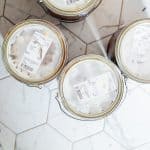Transform Your Space with Professional Epoxy Floor Coatings
The concrete flooring of a garage or workshop can be difficult to keep clean. It’s full of tiny cracks that harbor dirt and debris. Epoxy coatings create a smooth, seamless surface that’s easy to sweep and mop. It’s also slip-resistant, making it safer for kids and seniors. Choosing to DIY is an option, but professionals

The concrete flooring of a garage or workshop can be difficult to keep clean. It’s full of tiny cracks that harbor dirt and debris.
Epoxy coatings create a smooth, seamless surface that’s easy to sweep and mop. It’s also slip-resistant, making it safer for kids and seniors. Choosing to DIY is an option, but professionals will ensure a seamless process and high-quality finish.
Benefits of Epoxy Flooring
When you choose epoxy flooring, you can add a stylish look to your space and transform your concrete surfaces with a sleek finish. You can also save money and time by choosing this option over other types of flooring, such as tile, vinyl or wood. While laying a brand-new floor with these other materials will require the removal of your current flooring and buying and installing the new material, epoxy can be applied directly over your existing concrete floors.
Epoxy is also water-resistant, protecting your concrete floors from any damage caused by floods or spillages. You can even add extra grip to your floors by adding anti-skid additives or requesting slip-resistant epoxy coatings. These water-resistant and protective layers are also stain- and corrosion-resistant, ensuring that your flooring will last for years without the need to be replaced or repaired.
The installation process of epoxy flooring can be carried out quickly and efficiently, minimizing any downtime in your facility. It’s important to follow the specific application guidelines of each epoxy product, however, as different products will have varying mixing ratios and application rules. It’s also a good idea to read the manufacturer’s data sheet carefully, as this will provide valuable information on how to use the product properly, such as its limitations and pot life.
Professional floor preparation is also key for successful epoxy flooring, as it can help to ensure the adhesion of the product to the substrate. This includes sweeping, cleaning with degreasers and treating any oil or chemical stains. It’s also important to make sure that the floor is dry before beginning the coating process.
Another benefit of using epoxy is that it is highly resistant to scratches and dings, making it a great choice for heavy duty industrial spaces. You can keep your epoxy floor looking great by sweeping and mopping it regularly, and only using mild soap or detergent solutions. If you notice any dents, these can be easily and affordably repaired by a qualified epoxy flooring specialist.
Choosing epoxy flooring is an effective and affordable way to revamp your commercial or industrial space. Although epoxy requires a few coats with drying time in between, this is much less expensive than replacing the existing flooring and it will last for many years with minimal maintenance.
Preparation
A major advantage of epoxy is that it creates an impenetrable seal, which means that any floor that has an epoxy coating will be completely water-resistant. This is great for any space that may be susceptible to floods or water damage, as well as spaces that might need to contain chemical spills – the toxins won’t soak into the surface and can be easily cleaned.
Before laying an epoxy floor, it is important to thoroughly clean the existing concrete or substrate. This can be done by a thorough power wash, or by using a shot blaster to remove any dirt and debris from the surface. If there are any cracks or holes in the floor that need to be filled, this should be done before applying the first coat of epoxy putty. This process is best carried out by specialists, who will know the proper chemicals to use and can ensure that the concrete is free of any oils and solvents.
Once the floor is prepared, it’s time to apply the epoxy coating. The manufacturer’s instructions should be followed closely to ensure that the correct ratio of resin and hardener is used. Once the product has been mixed, it can be applied to the floor using a roller or squeegee.
Several coats of epoxy are typically required, and each one needs to be left to dry before the next is applied. It is also important to ensure that the flooring is properly laid, ensuring that there are no air bubbles or other defects in the finish. Finally, the floor should be left to fully cure, which will usually take up to 96 hours.
Epoxy floors are incredibly durable, and they can last for many years, especially when regularly maintained. Regular sweeping and occasional mopping with a pH-neutral cleaner will help to keep the floor looking new, and it’s always a good idea to place mats in high traffic areas or entranceways. In addition, it’s important to be aware that if the floor is exposed to harsh chemicals or excessive moisture, it could start to peel and chip away.
Application
Epoxy floor coatings are highly versatile and can be applied in an endless number of colours and textures. This makes them ideal for large spaces where multiple zones need to be clearly marked to ensure the safety of pedestrians and forklifts alike. Colours can also be mixed with metallic pigments to create unique visual effects.
Once the concrete floor has been repaired and prepared, a primer coat should be applied to ensure that the epoxy bonding process is successful. This step is crucial for ensuring the durability and longevity of your new epoxy flooring, so it is important to follow the manufacturer’s instructions carefully.
When the primer is dry, it’s time to apply the main epoxy coating. The best way to apply this layer is to work in small sections, rather than attempting to cover the entire floor at once. This will allow you to better control the epoxy application and ensure that it is applied evenly across the surface. Before the final coat is applied, it’s essential to use a notched trowel or similar tool to smooth the surface and eliminate any blemishes.
The epoxy resin and hardener will be mixed together according to the manufacturer’s instructions. Some manufacturers may recommend the addition of dye or pigment to achieve a certain aesthetic. Then the mixture will be poured onto the concrete floor and spread evenly with a notched trowel. Be sure to keep an eye out for areas that might require additional attention, such as any cracks or holes in the floor.
Once you’re happy with the appearance of your new epoxy floor, a light mist of 91% isopropyl alcohol will help to add further character and visual appeal to the coating. This will result in interesting cells and patterns on the surface, and it’s a great way to make your floor really stand out.
The non-porous finish created by epoxy floor coatings is highly water resistant, meaning that any accidental spillages of oil or chemicals will not cause permanent damage to the flooring. This is a major advantage for commercial spaces that are often subject to the occurrence of toxic spillages. The resinous finish on the flooring will also repel dirt, making it exceptionally easy to clean and maintain.
Maintenance

The longevity and immaculate appearance of epoxy flooring is contingent upon proper care and maintenance. A comprehensive strategy for preserving the tough, durable surface includes routine sweeping and mopping. Choosing cleaning equipment with soft bristles prevents scratches that can damage the floor and trap dirt beneath the coating. Scrubbing frequency depends on the amount of dirt and soilage that typically plagues the floor, but it is advisable to scrub all floors weekly and high-traffic areas daily. A mild detergent diluted with warm water provides the best results.
Immediately Clean Any Spills and Contaminants
In addition to preventing stains and discoloration, prompt spill cleanup also helps prevent the formation of unattractive scratches on the floor’s smooth epoxy surface. Corrosive cleaners, abrasive chemicals, and acidic substances like vinegar can wear away the epoxy coating over time. These items should be cleaned up promptly using a mild detergent or neutralizing solvent.
For high-traffic areas where abrasions are likely, putting down floor mats or rugs is an effective preventive measure. Placing furniture pads underneath heavy pieces of furniture will help prevent scuff marks and indentations as well. For a more thorough approach to avoiding scratching, consider hiring a professional maintenance company that has the tools and knowledge required to thoroughly examine and clean epoxy flooring.
Before performing any cleaning or maintenance procedures, it’s important to ensure the area is properly ventilated. Chemicals used in these processes can produce harmful fumes that need to be eliminated prior to the process commencing.
Besides cleaning, it’s a good idea to regularly inspect your epoxy floor for any signs of damage or deterioration. This will allow you to address problems early on and save money in the long run by avoiding costly repairs or replacements.
Cracks, chipping, or peeling areas of the epoxy coating should be addressed immediately as they can lead to further deterioration and require repair and recoating. It is also a good idea to inspect the floor for signs of moisture penetration as excessive moisture can cause the adhesiveness of the epoxy to deteriorate and degrade the surface.









